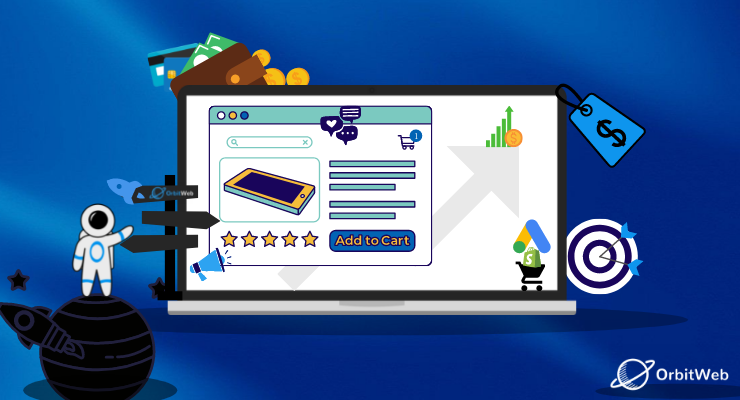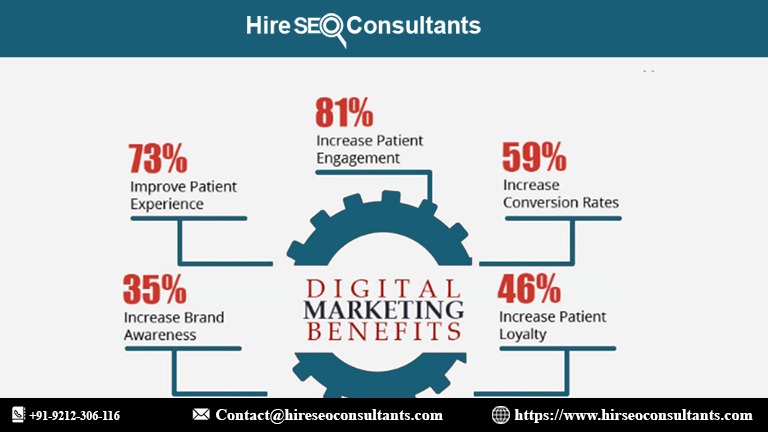Building Custom Solutions: A Guide to Shopify API with Node.js
Explore our comprehensive guide on using Shopify API with Node.js for building custom solutions.

A Guide to Shopify API with Node.js
In the ever-evolving landscape of e-commerce, Shopify has emerged as one of the leading platforms for online merchants. Its user-friendly interface, robust features, and extensive ecosystem have made it a go-to choice for businesses of all sizes. However, there are times when businesses need custom solutions to meet their unique requirements. This is where Shopify's API, combined with Node.js, comes into play. In this comprehensive guide, we will explore how to harness the power of Shopify API with Node.js to build custom solutions tailored to your business needs.
Understanding Shopify's Merchant Center
Before diving into the technical details of using Shopify's API with Node.js, it's essential to have a clear understanding of?Google Merchant Center Shopify. This centralized hub is where merchants manage their online stores, add products, process orders, and perform various other administrative tasks.
The Role of Shopify's Merchant Center
Product Management:?The Merchant Center allows merchants to add, edit, and remove products from their online stores. This includes defining product attributes, such as pricing, variants, and inventory levels.
Order Processing:?Orders placed by customers are managed within the Merchant Center. Merchants can view, process, and fulfill orders efficiently.
Inventory Control: Keeping track of inventory is crucial for any e-commerce business. The Merchant Center provides tools for managing product quantities and stock levels.
Customization: Merchants can personalize their online stores by customizing themes, layouts, and content through the Merchant Center.
Marketing Tools: Shopify offers various marketing tools and integrations within the Merchant Center, helping merchants promote their products and reach a wider audience.
Analytics: The platform provides insights into store performance through analytics and reporting tools.
Extending Shopify's Functionality with Custom Solutions
While Shopify's Merchant Center offers a wide array of features, there are instances when businesses require tailored solutions to meet specific needs. This is where Shopify's API comes into play. The API (Application Programming Interface) allows developers to interact with and extend the functionality of the?Shopify Google Shopping?platform.
Shopify API with Node.js
Node.js is a popular runtime environment for JavaScript that allows developers to build server-side applications. It's known for its speed and scalability, making it an excellent choice for integrating with Shopify's API. To get started with building custom solutions using Shopify API with Node.js, follow these steps:
Set Up a Shopify Store
If you don't already have a Shopify store, you'll need to create one. Visit the Shopify website and sign up for an account. Once your store is set up, you can access your store's data through the API.
Extend Functionality as Needed
This is just the beginning. With the foundation in place, you can extend your Node.js application to perform a wide range of actions on your Shopify store. You can create, update, or delete products, manage orders, handle inventory, and more. The possibilities are virtually limitless.
Enhancing Shopify with AfterPay Integration
One of the key aspects of successful e-commerce is providing convenient payment options to customers. AfterPay is a popular "buy now, pay later" solution that allows shoppers to split their purchases into multiple, interest-free installments. Integrating AfterPay with your?Shopify enterprise??store can enhance the shopping experience and boost sales. Here's how you can achieve this integration:
AfterPay Setup
Before integrating AfterPay with your Shopify store, you need to set up an AfterPay account. Visit the AfterPay website and sign up for a merchant account. Once your account is approved, you'll gain access to the necessary credentials for integration.
Install AfterPay App
Shopify offers a variety of apps that streamline the integration of third-party payment gateways like AfterPay. Search the Shopify App Store for an AfterPay integration app that suits your needs. Install and configure the app according to your preferences.
Configure AfterPay in Shopify
After installing the AfterPay app, you'll need to configure it in your Shopify store's settings. This typically involves entering your AfterPay API credentials and configuring display options for AfterPay as a payment method.
Test the Integration
Before making AfterPay live on your store, thoroughly test the integration to ensure that customers can use it seamlessly. Place test orders, process payments, and confirm that AfterPay installment options appear as expected during the checkout process.
Launch AfterPay as a Payment Option
Once you are satisfied with the testing phase, you can launch AfterPay as a payment option on your?Shopify api node?store. Make sure to communicate this new payment option to your customers to encourage its use.
Leveraging Shopify for Google Shopping
Google Shopping is a powerful advertising platform that allows merchants to showcase their products directly in Google search results. Integrating your Shopify store with Google Shopping can help you reach a broader audience and drive more traffic to your e-commerce site. Here's how to get started:
Set Up a Google Merchant Center Account
To begin, you'll need a Google Merchant Center account. Visit the Google Merchant Center website and sign up for an account. This is where you'll create and manage your product listings.
Create a Google Shopping Feed
Google requires a product feed that contains information about your products, such as titles, descriptions, prices, and availability. You can generate a feed from your?tapcart Shopify?store using the Google Shopping app or a third-party feed generator app available on the Shopify App Store.
Link Google Merchant Center with Shopify
To link Google Merchant Center with your Shopify store, you'll need to verify ownership of your website and connect the two platforms. This typically involves adding a meta tag or a TXT record to your Shopify store's settings.
Configure Google Shopping Campaigns
Once your Google Merchant Center account is connected to Shopify, you can create Google Shopping campaigns. These campaigns allow you to set budgets, target specific products, and control your advertising strategy.
Monitor and Optimize
Regularly monitor the performance of your Google Shopping campaigns and make adjustments as needed. Analyze key metrics like click-through rate, conversion rate, and return on ad spend (ROAS) to optimize your advertising efforts.
Shopify Enterprise: Scaling Your Business
As your e-commerce business grows, you may find that your needs extend beyond the capabilities of Shopify's standard plans. Shopify Enterprise is designed to meet the requirements of larger and more complex businesses. Here are some key features and benefits of Shopify Enterprise:
Advanced Customization
Shopify Enterprise offers advanced customization options, allowing you to create a unique and tailored online shopping experience for your customers. You can work with developers to build custom themes and features that align with your brand.
Scalability
With Shopify Enterprise, you have the ability to scale your business without worrying about technical limitations. The platform can handle high traffic volumes, large product catalogs, and complex operations.
Dedicated Support
Enterprise-level customers receive dedicated support from?Shopify Google?team of experts. You'll have access to a dedicated account manager who can assist with technical issues, strategic planning, and optimization.
Robust Security
Security is paramount for e-commerce businesses, especially when handling sensitive customer data. Shopify Enterprise includes advanced security features and compliance with industry standards to protect your business and your customers.
Global Expansion
If your business operates internationally, Shopify Enterprise provides tools for managing multiple stores, languages, and currencies. This makes it easier to expand your reach and serve a global customer base.
Shopify's Acquisition of Deliverr
In 2021, Shopify made a significant move by acquiring Deliverr, a fulfillment platform known for its fast and reliable order fulfillment services. This acquisition has had a profound impact on Shopify's capabilities and its ability to compete with other e-commerce giants like Amazon. Here's what you need to know about Shopify's acquisition of Deliverr:
Enhanced Fulfillment Services
Deliverr's expertise in fulfillment services has allowed Shopify to offer competitive, fast, and reliable shipping options to its merchants. This is particularly beneficial for businesses that want to provide quick delivery to their customers.
Expanded Product Offerings
Shopify has integrated Deliverr's services into its platform, making it easier for merchants to leverage fulfillment capabilities. This includes features like two-day and next-day delivery options, which can help businesses compete with Amazon's Prime service.
Competitive Advantage
By offering a seamless fulfillment experience through Deliverr, Shopify has leveled the playing field for small and medium-sized businesses, allowing them to compete more effectively with larger retailers.
Improved Customer Experience
Faster and more reliable shipping options enhance the overall customer experience. With Deliverr's services integrated into Shopify, merchants can provide a higher level of service to their customers, leading to increased customer satisfaction and loyalty.
Shopify's API, in combination with Node.js, empowers businesses to create custom solutions that extend the capabilities of their online stores. Whether you're integrating payment gateways like AfterPay, leveraging advertising platforms like Google Shopping, or scaling your business with Shopify Enterprise, the flexibility of Shopify's ecosystem opens up a world of possibilities for e-commerce entrepreneurs.
The acquisition of Deliverr further solidifies Shopify's position as a leader in the e-commerce industry, offering merchants access to top-tier fulfillment services and the ability to compete effectively in a fast-paced market.
As you embark on your journey to build custom solutions for your Shopify store, remember that the key to success lies in understanding your specific business needs and leveraging the right tools and technologies to meet them. With the right approach and a strategic use of Shopify's API, you can create a seamless and powerful e-commerce experience for your customers, driving growth and success for your business.
What's Your Reaction?














